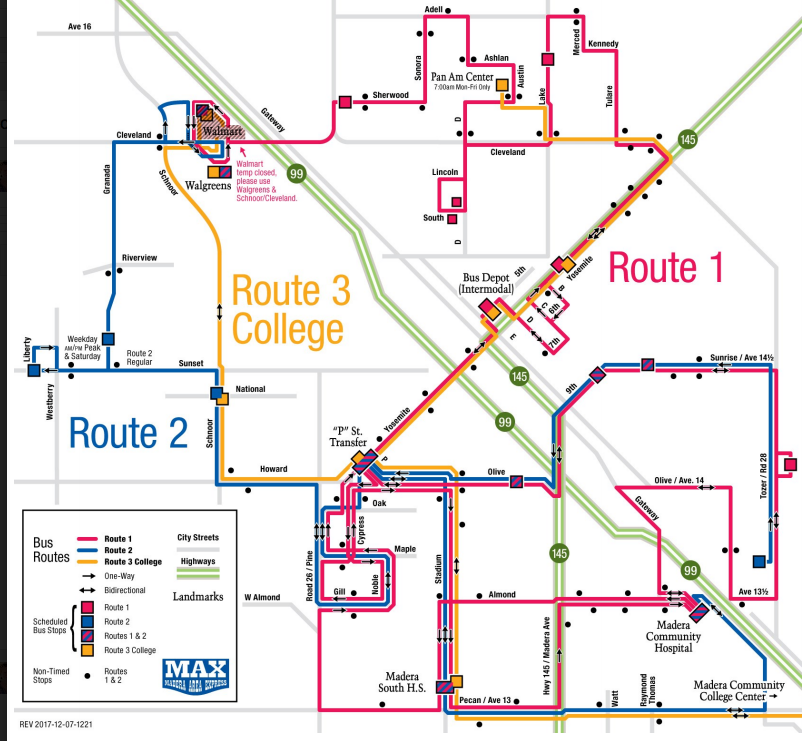The city of Madera’s transit system, Madera Area Express (MAX), launched a new bus route that for the first time directly serves the local college. The service began on January 2, just in time for the start of classes. It will deliver riders to the campus every hour during the day.
“I’m already seeing students take the bus, it makes me so happy,” Claudia Habib, Vice President of Madera and Oakhurst Community College Centers, said.
The new Route 3 (College) is an express route, which means it has fewer stops than regular routes. It starts at the Walgreens on Cleveland Ave at fifteen minutes past the hour and makes three stops before arriving at Madera Community College Center half an hour later.
The city even added a one-time 7 a.m. “morning connector” bus to its existing Route 1, which deviates slightly from the regular route to meet up with the Route 3 bus at the P Street transfer station downtown. “This allows students from the east part of the city to transfer and make it to campus by 8 a.m.” said Debra McKenzie, the city’s grants program manager. After that morning connection, the bus continues the day as a regular Route 1 bus.
McKenzie and her colleagues coordinated with Habib to bring this service to the community after they noticed a great need. McKenzie said they noticed a lot of riders getting to the campus area by using MAX’s dial-a-ride service, which is open to the general public. A survey conducted in 2015 by the Madera County Transportation Commission [PDF] highlighted the long distances students travel to get to campus, and showed McKenzie and her colleagues that “we definitely needed a service there.”
The county bus system does stop at the college, but not very often.
Ivette Iraheta, grants administrator with the city, said it took about two years to get the College route started. “Part of it was the process…but also they wanted to ensure that it will be a success,” she said.
In 2009, the city piloted a fixed-route service to the campus, but it had low ridership and funding was discontinued. This time, funding from the Federal Transit Administration ensures service to the college for a minimum of three years. In addition, coordination between the city and the college makes it more likely that it will meet everyone's needs.
The Madera and Oakhurst Community College campus is located on Avenue 12 off Highway 99, and is surrounded by orchards. The nearest population centers, downtown Madera and the Madera Ranchos community, are approximately five and six miles away, respectively.
“It makes it difficult for students to back and forth, to go to work, to get something to eat, to be full-time students,” Habib said of the rural setting.
Habib said she and staff at the college noticed that students would be dropped off on campus very early, sometimes at 6 a.m., even though classes don’t generally start until two hours later. She hopes the scheduled service will help students without private transportation options arrive at a suitable time.
“Sometimes their families only have one car, or are working in the fields and need to drop them off before then,” she said.
Habib estimates that this academic year about 5,500 students attend the college, which is part of the State Center Community College District. She said 68 percent are on some type of financial aid, and their income status qualifies them to have their enrollment fees waived. The low fare, 75 cents one way or $26 for a monthly pass, is affordable enough for some students.
“Every expense makes a huge difference to students,” she said, adding that there are programs on campus that help students pay for transit passes.
Now that the service has launched, the college and the city have been working on promoting the new route to students on and off campus and through social media. Iraheta and McKenzie said that once the route has been in operation for some time, they might add or change a stop depending on rider needs. Habib said she is in early talks with the county to install a bus shelter at the campus.
“This is a good example of when different agencies work together for the benefit of the community,” Habib said.






